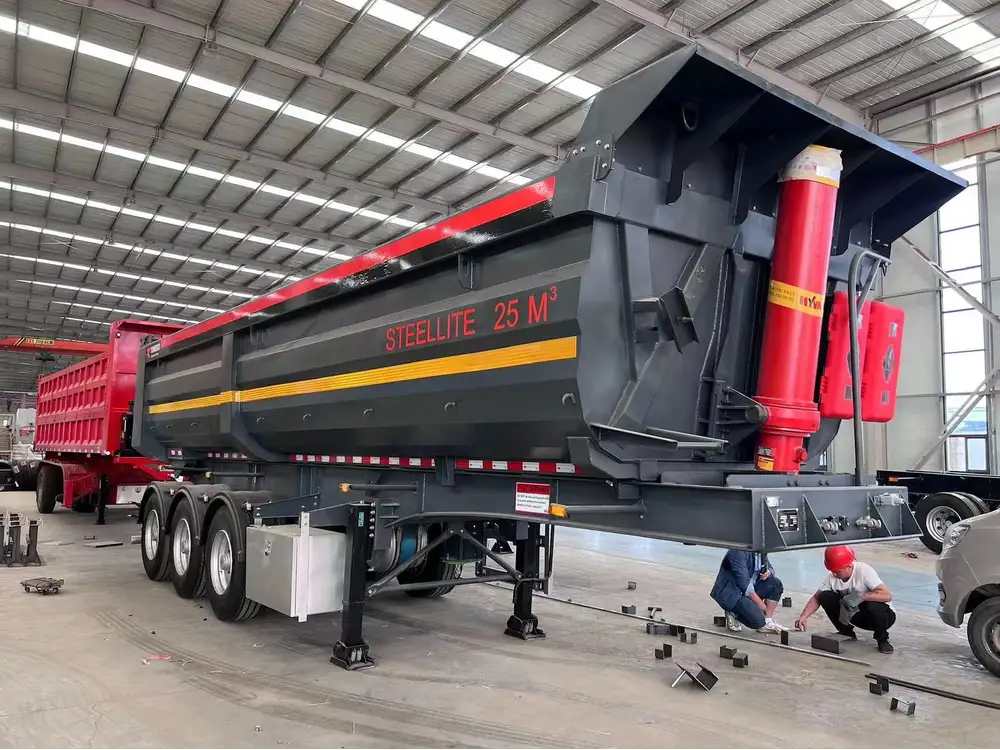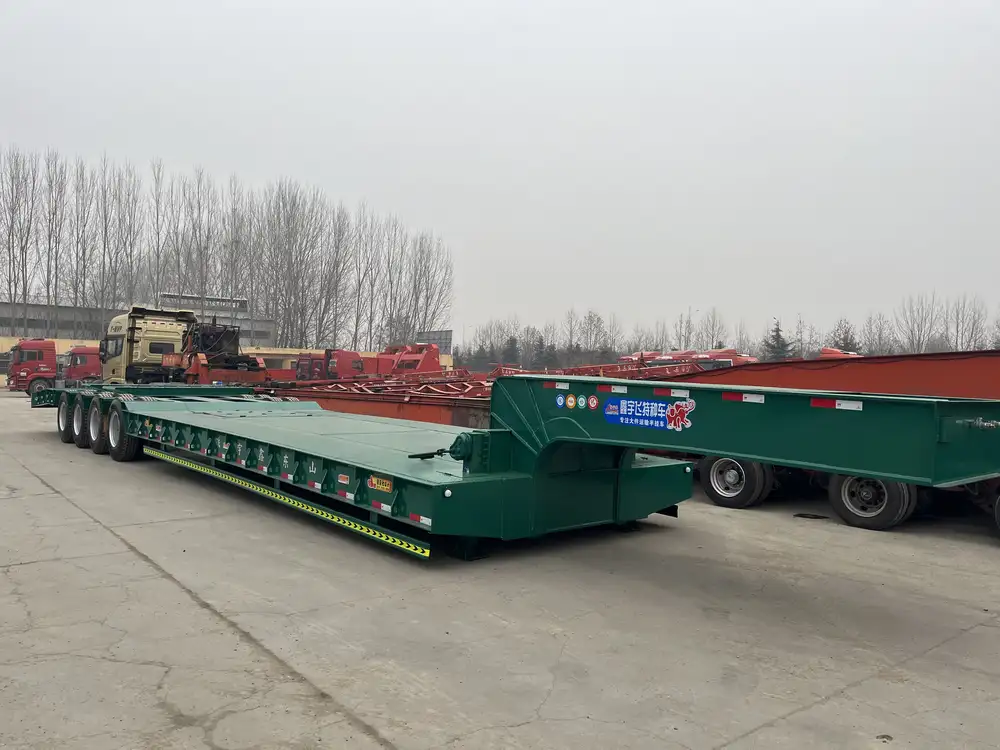Semi-trailers are the backbone of freight logistics, offering the versatility to transport a variety of goods across vast distances. However, one crucial aspect often overlooked in the operation of semi-trailers is the clamping system. Proper clamping techniques ensure stability and safety during transport, minimizing the risk of cargo damage. In this guide, we will explore everything you need to know about clamping to semi-trailers, helping you understand its significance and application.
Understanding Clamping Mechanisms on Semi-Trailers
Clamping mechanisms on semi-trailers are designed to secure loads effectively. They come in various types, each catering to different cargo needs. Below, we delve into the different clamping mechanisms you might encounter.
Types of Clamping Mechanisms
| Clamping Type | Description | Ideal Use Case |
|---|---|---|
| Ratchet Straps | Adjustable straps that use a ratchet mechanism for tension | Lightweight loads like boxes and crates |
| Bench Clamps | Fixed clamps that attach to the trailer’s framework | Heavy machinery and equipment |
| Air-Suspension Systems | Use compressed air to secure cargo | Delicate items that require cushioning |
| Chain and Binder | Chains with a binder that locks them in place | Heavy-duty applications, like steel rolls |
| Tensioned Nets | Gridded nets that secure cargo in place | Loose or irregularly shaped items |
Understanding these various options allows for informed decisions to be made in selecting the most suitable clamping mechanism for the load being transported.

The Importance of Proper Clamping
Effective clamping safeguards against the unforeseen. It prevents load shifts, reduces the chance of accidents, and minimizes cargo damage. Additionally, misunderstandings surrounding clamping can lead to legal ramifications if cargo is lost or damaged. Here’s why clamping is crucial:
Safety
The primary concern while transporting goods is safety. A well-clamped load ensures stability and reduces the likelihood of rolling or swaying, ultimately protecting both the freight and the driver’s life.
Efficiency
Proper clamping aids in the smooth transport of goods, improving the overall efficiency of logistics operations. It reduces delays caused by adjustments or accidents related to improperly secured loads.

Reduced Costs
Ensuring that loads are secured correctly can significantly lower costs associated with damage liability. Companies can save on insurance premiums and loss of cargo.
Regulatory Compliance
Many jurisdictions have specific regulations regarding the securement of loads. Failing to adhere can lead to fines and sanctions. Proper clamping adheres to these regulations, keeping companies in good standing with transport authorities.
How to Properly Clamp to a Semi-Trailer: Step-By-Step Guide
Securing a load on a semi-trailer involves several critical steps. This section provides a detailed, structured approach to clamping, ensuring maximum effectiveness.

Step 1: Assess the Load
Before you can clamp anything, it’s essential to assess the cargo. The dimensions, weight, and balance of the load must be understood to determine how to best secure it.
- Weight Distribution: Ensure the heavier side of the load is balanced with the trailer’s weight distribution to prevent tipping.
- Type of Cargo: Different cargo types require different clamping systems; for example, fragile items may need more cushioning than robust materials like metal.
Step 2: Choose the Right Clamping System
Based on your load assessment, select the appropriate clamping mechanism. Refer back to the table of clamping types above to make an informed decision.
Step 3: Prepare the Semi-Trailer
- Inspect the Tie-Down Points: Ensure that the trailer’s tie-down points are in good condition. Look for rust, damage, or structural integrity issues.
- Clean the Area: Remove any debris or obstacles that could interfere with the clamping process.

Step 4: Secure the Load
Following are key methodologies to effectively clamp the load:
Using Ratchet Straps:
- Pull the strap around the load.
- Feed it through the ratchet mechanism.
- Use the crank to tighten the strap securely but not excessively to avoid damage to the cargo.
Chain and Binder Approach:
- Wrap the chain around the cargo and secure it to the designated points on the trailer.
- Use the binder lever to tighten the chain, ensuring no slack is left.
Air-Suspension Systems:
- Engage the air compressor to inflate the suspension to the required levels.
- Carefully release air to allow the cargo to settle into place securely.
Step 5: Double-Check Securing
Once all clamping systems are in place, conduct a thorough inspection.
- Visual Inspection: Look for any slack or misalignment in the clamping systems.
- Test Tightness: Firmly pull on each strap or chain to ensure they are tight and secure.
Step 6: Document and Adjust
Finally, document the clamping system setup, preferably with photos, to reference later on. Post-journey, always check and adjust clamps as necessary.

Troubleshooting Common Clamping Issues
While clamping can seem straightforward, various issues can arise during the clamping process. Here are common problems and solutions:
| Problem | Solution |
|---|---|
| Straps/Chains Slipping | Ensure they are adequately tensioned and fed through appropriately. Use anti-slip devices if necessary. |
| Worn-Out Equipment | Regularly inspect clamping tools and replace worn or damaged items immediately to prevent failure. |
| Cargo Damage | Utilize padding materials to mitigate direct impact between clamps and cargo. |
| Regulatory Non-Compliance | Ensure all clamping methods comply with local and national regulations by frequently reviewing applicable laws. |
Best Practices for Load Clamping on Semi-Trailers
Adhering to the following best practices can enhance the efficiency and safety of your clamping operations:
Regular Training: Hiring skilled personnel is essential. Ensure that all vehicle operators are well-trained in the clamping process and aware of best practices.
Conduct Inspections: Before loading, carry out inspections of your clamping equipment and the trailer itself to identify any issues beforehand.
Use Quality Equipment: Invest in high-quality clamping systems and ensure they are appropriate for the loads being transported.
Maintain a Logbook: Keep a log of inspections, repairs, and notable issues related to clamping; this helps in identifying patterns and problems over time.
Stay Updated on Regulations: Regularly review federal and state regulations pertaining to cargo securement to maintain compliance.
Conclusion
Mastering the art of clamping to semi-trailers is integral to successful freight logistics. The right approach not only ensures the secure transport of various goods but also safeguards the wellbeing of all involved in the transport chain. By understanding the various clamping systems, employing best practices, and maintaining diligence in securing loads, manufacturers and transporters alike can significantly enhance operational efficiency and safety. Embrace these techniques and procedures to elevate your semi-trailer transport to unparalleled heights.



